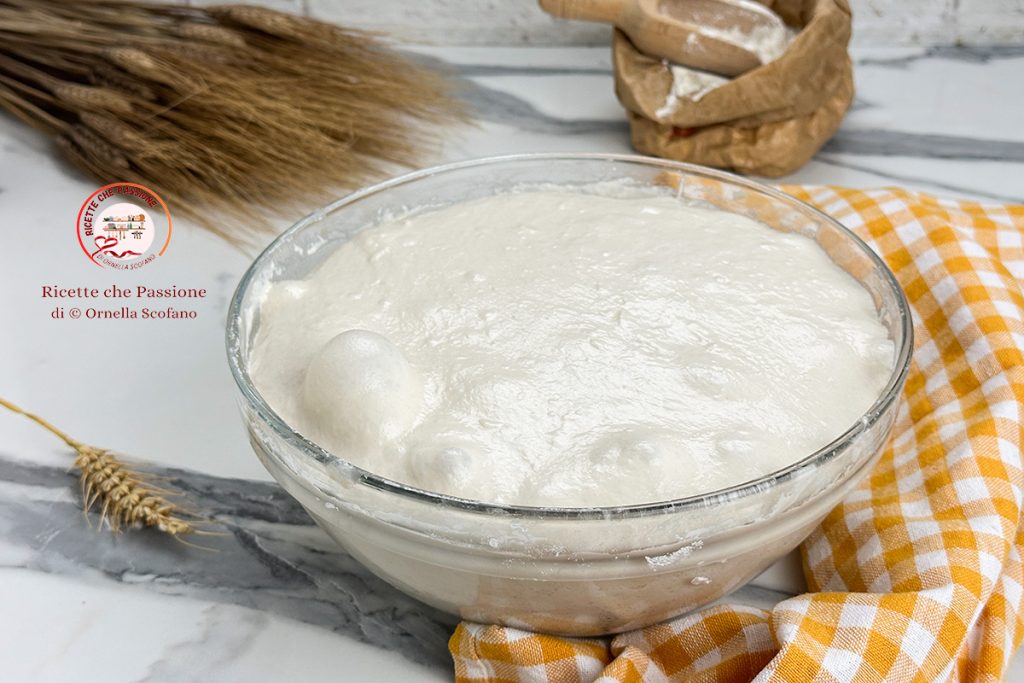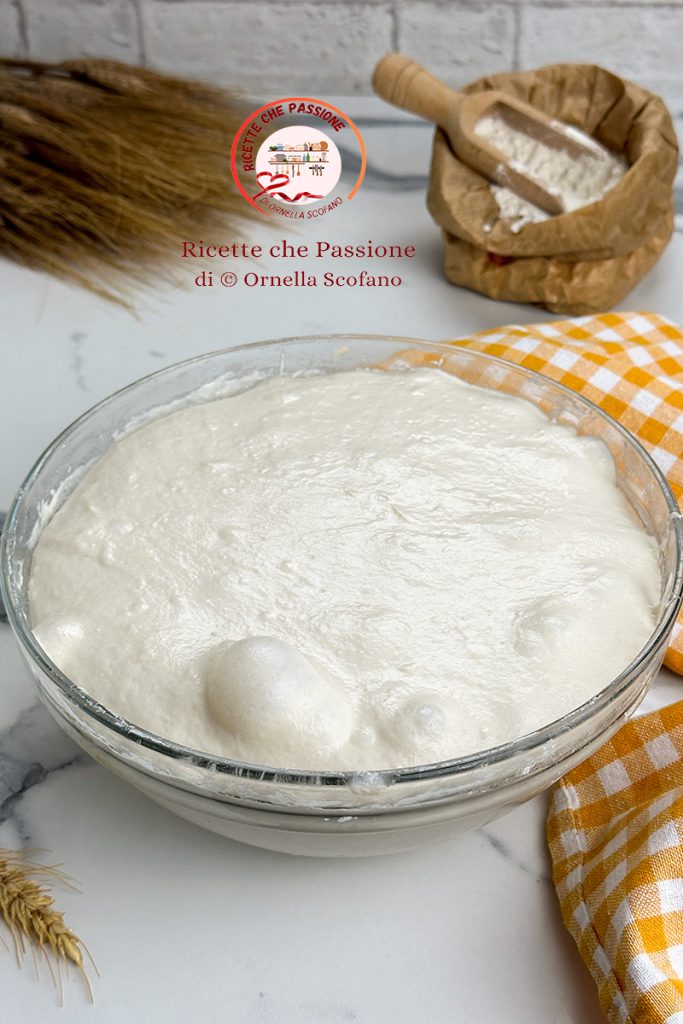Dough with biga for pizza bread or focaccia that’s wow, airy leavened dough, light as a cloud with a moist crumb as if prepared with sourdough, but it’s simply made with a biga with very little yeast, only 3 g. The biga is just a rough pre-ferment, with most of the flour, used for our dough, and a small amount of cold water, quickly mixed with the yeast dissolved in the water. Let it rise for at least 16 hours, and then the final dough is prepared with the biga. Preparations with biga are made with an indirect dough, indirect because the final dough involves several steps, first the biga, then the final dough. I had already made bread with poolish or levitino, depending on a long or short rise, the difference there is that unlike biga, a small amount of flour compared to the final dough is used, and the same amount of water is used, resulting in a very liquid dough. Having tried both methods, I can confirm that both are very valid, to be chosen according to our needs. Time, types of flour, and temperature. If we have time, it’s better to prefer long rising times, using strong flours, with a W index above 300, and obviously letting them rise at low temperatures, so that our leavened products have time to mature well and develop a perfect gluten structure that makes them light, airy, and digestible.

- Difficulty: Medium
- Cost: Very economical
- Preparation time: 40 Minutes
- Portions: 5 pizzas
- Cooking methods: Oven, Frying, Electric oven
- Cuisine: Italian
- Seasonality: All seasons
Ingredients for dough with biga
- 700 g flour 0 for pizza
- 310 ml cold water
- 3 g fresh yeast
- biga
- 300 g flour 0 for pizza
- 390 ml very cold water
- 25 g salt
- 20 g olive oil for focaccia
Tools for preparing dough with biga
- 1 Bowl
- 1 Stand mixer
- 1 Spoon
- 1 Work surface
- 1 Scraper
- 1 Plastic wrap
Steps for preparing dough with biga for pizza bread or focaccia

In a small bowl, dissolve the yeast with cold water; in winter, room temperature is fine, in summer, use it straight from the fridge.
In a large bowl, put the flour to prepare the biga, add the water and mix with a spoon to get a rough mixture, you can also work it quickly by hand. Once you have a fairly hard dough, cover and let it rise at a low temperature, I leave it at room temperature of about 55°F (13°C) for 16 hours. If you put it in the fridge, especially in summer, it might take longer, unless after 12 hours you bring it to room temperature.
When the biga has risen, prepare the final dough. For this phase, it’s ideal to work with a stand mixer, as the mixture is quite hard.
In stand mixer put the remaining flour and the biga broken into pieces by hand to eliminate any lumps. Start working, then gradually add all the water, ice cold from the freezer, and work well until the dough detaches from the sides of the mixer.
Finally, add the salt and then the oil if you are preparing focaccia.
Transfer to a surface, and work it further to make the dough very elastic. I let it rest a bit and then resume working it. Finally, form a dough ball and let it rise in a bowl. Cover with plastic wrap.
Let it rise at room temperature if it’s cold, around 55°F (12-13°C) for at least 13-14 hours, or more if necessary, at lower temperatures, like in the fridge, it might take more time. If you want to slow down the rising further, you can put it in the fridge for up to 24 hours.
When the dough has risen, work it quickly to make folds and then make the dough balls for your preparations. In case of pizza, make the dough balls and let them rise for another 2-3 hours. The same for focaccia, only this time let it rise once more in the baking tray after spreading it. Or shape your bread and let it rise in the appropriate bread baskets.
Bake pizza and focaccia in a preheated ventilated oven at the highest temperature. For bread, lower the temperature gradually from the maximum to 350°F (180°C).

